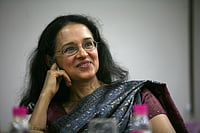Retail inflation, which is measured by the Consumer Price Index inched up to 7.59 per cent in January this year, which is highest since May 2014 as the data released by the National Statistical Office on Wednesday. The inflation rate in January spiked from 7.35 per cent in December 2019. In January retail inflation in rural parts of India stood at 7.73 per cent, while in urban area it stood at 7.39 per cent. However, the retail inflation rose to an alarming level of 7.59 per cent from 1.97 per cent in January last year.
According to the data by the NSO, inflation in food category has come down slightly from 14.12 per cent in December 2019 to 13.63 per cent in January 2020. But the food inflation was -2.17 per cent in January 2019. However, the main culprits in driving retail inflation are food and telecom hike. As the inflation in the vegetable category rose by 50.19 per cent in comparison to 60.05 per cent in December 2019 and in case of pulses, the inflation spiked to 16.71 per cent in January.
The inflation in housing sector grew by 4.20 per cent in January 2020 compared to 4.3 per cent in December 2019 while the inflation in fuel and light rose by 3.66 per cent from 0.7 per cent in December and inflation in transport and communication sector witnessed an inflation of 6.08 per cent, last month.
This is a second time in a row that the retail inflation has breached the comfort zone of the RBI’s Monetary Policy Committee. The apex bank has already slashed the repo rate by 135 bps from February 2019, and as retail inflation remained above the comfort zone of RBI, the apex bank in the monetary policy meeting in December and February decided not to cut repo rate any further. However, with the worrying retail inflation rate at 7.59 per cent, now it is pretty clear that in the next monetary policy meeting scheduled in April the RBI is going to tread the same path and will not go for any other rate cut.






























